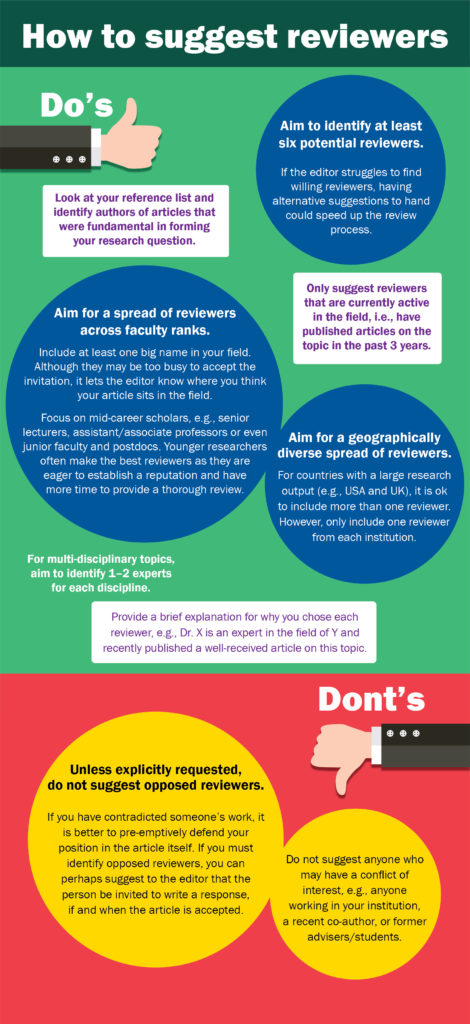Journals often struggle to find willing reviewers, which can lengthen the publication process. To combat this, you may be requested to suggest reviewers at the submission stage.
In the following infographic, we provide some tips on identifying suitable reviewers.
The infographic contains the following text:
Do’s
Aim to identify at least six potential reviewers.
If the editor struggles to find willing reviewers, having alternative suggestions to hand could speed up the review process.
Look at your reference list and identify authors of articles that were fundamental in forming your research question.
Only suggest reviewers that are currently active in the field, i.e., have published articles on the topic in the past 3 years.
Aim for a spread of reviewers across faculty ranks.
Include at least one big name in your field. Although they may be too busy to accept the invitation, it lets the editor know where you think your article sits in the field.
Focus on mid-career scholars, e.g., senior lecturers, assistant/associate professors or even junior faculty and postdocs. Younger researchers often make the best reviewers as they are eager to establish a reputation and have more time to provide a thorough review.
Aim for a geographically diverse spread of reviewers.
For countries with a large research output (e.g., USA and UK), it is ok to include more than one reviewer. However, only include one reviewer from each institution.
For multi-disciplinary topics, aim to identify 1–2 experts for each discipline.
Provide a brief explanation for why you chose each reviewer, e.g., Dr. X is an expert in the field of Y and recently published a well-received article on this topic.
Dont’s
Do not suggest anyone who may have a conflict of interest, e.g., anyone working in your institution, a recent co-author, or former advisers/students.
Unless explicitly requested, do not suggest opposed reviewers.
If you have contradicted someone’s work, it is better to pre-emptively defend your position in the article itself.
If you must identify opposed reviewers, you can perhaps suggest to the editor that the person be invited to write a response, if and when the article is accepted.

